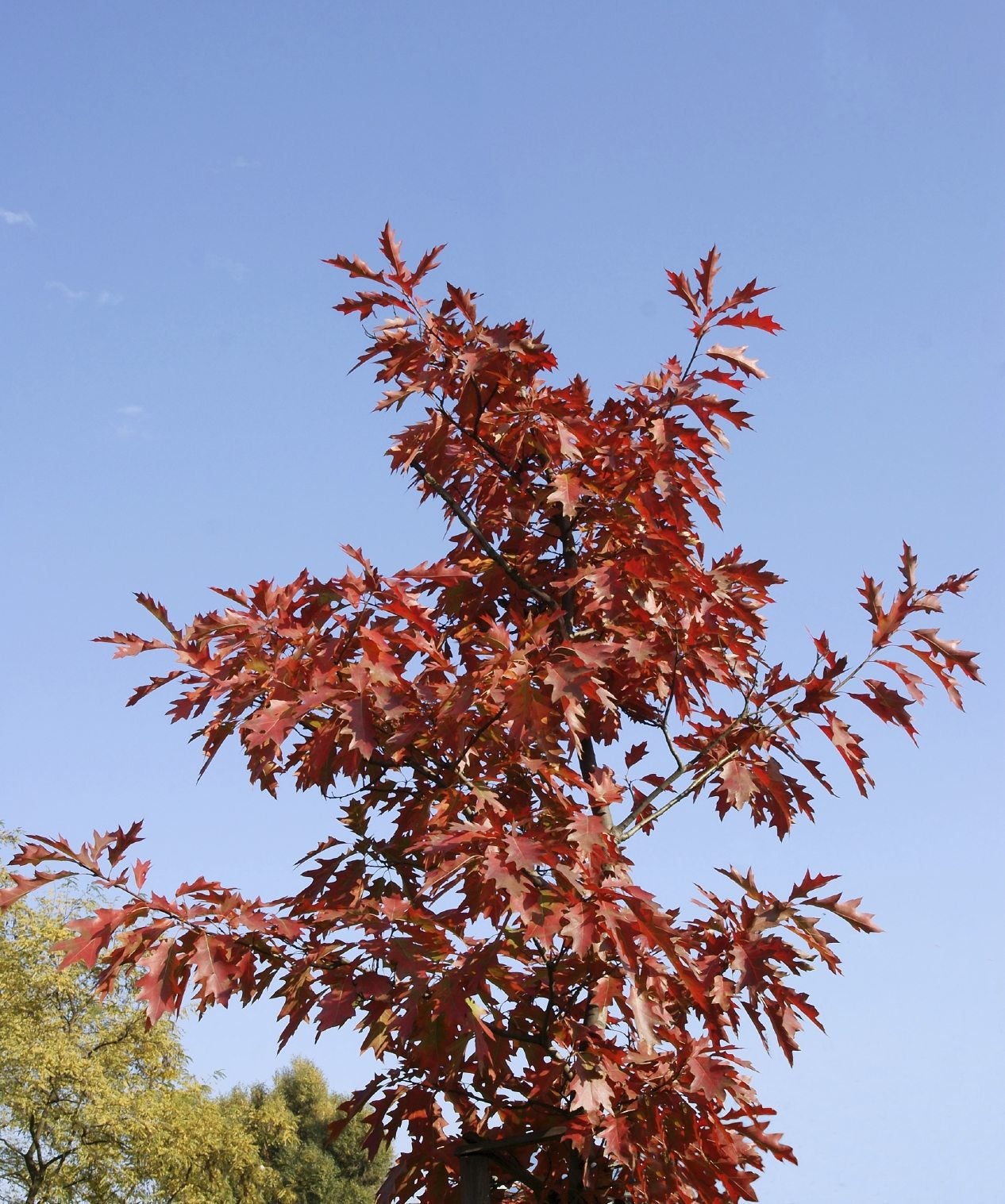Red Oak Tree Information: How To Grow A Red Oak Tree


Northern red oak (Quercus rubra) is a handsome, adaptable tree that thrives in nearly any setting. Planting a red oak tree requires a bit of extra preparation, but the payoff is great; this American classic provides glorious summer shade and reliable fall color for many years to come. Read on for red oak tree information, then learn how to grow a red oak tree.
Red Oak Tree Characteristics and Info
Red oak is a hardy tree suitable for growing in USDA plant hardiness zones 3 through 8. This moderately fast-growing oak tree reaches mature heights of 60 to 75 feet (19-23 m.), with a spread of 45 to 50 feet (14-15 m.). The tree is valued for its deep root system, which makes it useful for planting near urban streets and sidewalks.
How to Grow a Red Oak Tree
Planting a red oak tree is best done in spring or fall so the roots have time to settle in before the arrival of hot, dry weather. Select a planting space carefully so the tree won’t interfere with buildings or power lines. As a general rule, allow at least 20 feet (6 m.) in each direction. Ensure the tree is exposed to at least six hours of direct sunlight every day. In its natural environment, red oak has a symbiotic relationship with various fungi, which provides the roots with moisture and minerals. The best way to replicate this natural soil environment is to dig generous amounts of manure and compost into the soil before planting. This step is especially important in urban areas where the soil may be depleted. Plant the tree in a hole at least twice as wide as the root ball, then fill the hole with a soil/compost mixture. Water the tree deeply and slowly to ensure the area around the root ball is saturated. A thick layer of bark mulch will keep the roots cool and moist. Protect young red oak trees with a fence or cage if you have hungry rabbits or deer in the neighborhood.
Care of Red Oak Trees
Care of red oak trees is minimal, but a new tree requires regular moisture, especially during hot, dry weather. Water the tree deeply once every week in the absence of rainfall. Established trees are relatively drought tolerant. Treat young red oak trees with a commercial fungicide if you notice powdery mildew during warm, humid weather. Watch for aphids, which are usually easy to remove by spraying the foliage with a strong stream of water. Otherwise, use an insecticidal soap spray.
Gardening tips, videos, info and more delivered right to your inbox!
Sign up for the Gardening Know How newsletter today and receive a free copy of our e-book "How to Grow Delicious Tomatoes".

A Credentialed Garden Writer, Mary H. Dyer was with Gardening Know How in the very beginning, publishing articles as early as 2007.
-
 Looking For Plants To Give You The Soft And Fuzzies? Try These 5 Fuzzy Leaf Plant Options
Looking For Plants To Give You The Soft And Fuzzies? Try These 5 Fuzzy Leaf Plant OptionsLovers of texture, drama, silver foliage and tactile plants will adore these special sensory garden additions. These fuzzy leaf plant options will leave you all aglow
By Susan Albert
-
 Get Ready For A Summer Of Hummers! Grow These Full Sun Hummingbird Plants and Flowers
Get Ready For A Summer Of Hummers! Grow These Full Sun Hummingbird Plants and FlowersIf you’re lucky enough to enjoy a sunny backyard, make sure you are maxing out on your pollinator opportunities and grow these full sun hummingbird plants and flowers
By Tonya Barnett